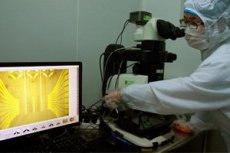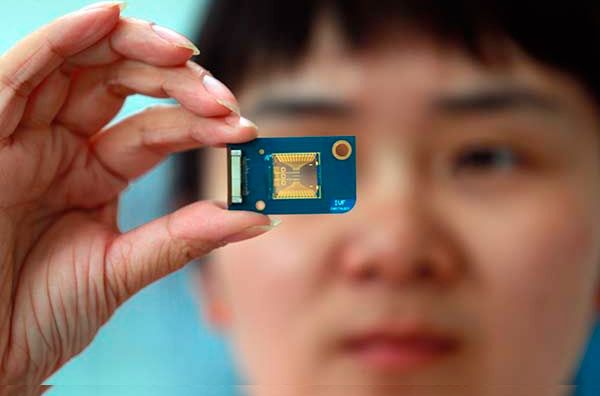New publications
Scientists have created a biodegradable chip from an egg
Last reviewed: 02.07.2025

All iLive content is medically reviewed or fact checked to ensure as much factual accuracy as possible.
We have strict sourcing guidelines and only link to reputable media sites, academic research institutions and, whenever possible, medically peer reviewed studies. Note that the numbers in parentheses ([1], [2], etc.) are clickable links to these studies.
If you feel that any of our content is inaccurate, out-of-date, or otherwise questionable, please select it and press Ctrl + Enter.

High-quality electronics are distinguished by their durability, but, unfortunately, almost all components of electronic devices after getting into landfills decompose for at least several decades and poison the earth, releasing dangerous and toxic compounds into the environment. This problem is relevant for all countries and many scientists have been trying for a long time to find alternative materials that after the end of use would simply disintegrate into safe components and would not harm the environment. Quite recently, one of the research groups managed to develop a unique method for creating an environmentally friendly electronic chip. An international team of scientists from Great Britain and China created a chip based on eggs, more specifically only part of the egg - protein, which is known to be rich in protein.
One of the researchers explained that to create the chip, they applied a very thin film of protein fibers to a flint plate. On one side of the film, magnesium electrodes were applied, and on the other, tungsten electrodes. According to the researchers, both tungsten and magnesium disintegrate easily and quickly in natural conditions, which is why these materials were chosen to create the new ecological chip.
Then, using the new egg white chip as a basis, the scientists were able to make a biodegradable memristor – a small element of electronic devices that can store information.
In theory, such elements have existed since the early 70s, but only 8 years ago, engineers at Hewlett Packard managed to create the world's first memristor. In computers, such elements are responsible for storing information and allow for almost instant loading of the operating system. Of course, there are some peculiarities in the operation of the protein memristor, in particular, it operates at a certain level of humidity.
The specialists tested the unique memory element, and in the first trial period it worked normally for more than 3 months. After the scientists placed the used chip in boiling water, after 10 hours all the elements of the silicon plate completely dissolved. The remaining components of the chip - silicon and silicon dioxide - decomposed for about 3 days.

It is worth noting that the newly created material, which is based on protein (the main component of protein), is a transition material. In the field of electronic devices, this concept is relatively new and means that materials consisting of several elements are completely decomposable and do not harm the environment after the end of their service life. For the first time, such a material, decomposing in nature, almost without residue, was created in the laboratory of one of the American universities located in the state of Iowa. Then, in 2014, scientists created a miniature antenna that transmits the necessary information; after the end of its service life, the antenna completely decomposes into safe elements.
The development of the new unique biodegradable chip was carried out by scientists from several universities – Zhejiang, Fujian, Cambridge and the University of Bolton (UK).

 [
[